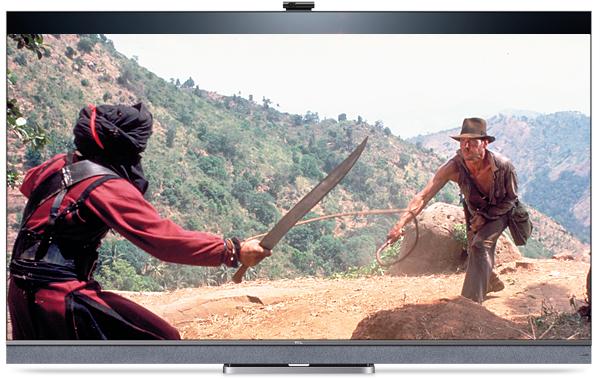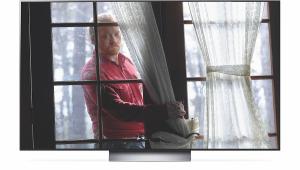TCL 65C825K Mini LED TV Review

The big new buzzword in the TV world is mini LED. This premium backlighting technology uses much smaller LEDs than those found on conventional LED-lit LCD screens, allowing more to be deployed behind the glass. The result is a boost to both potential brightness and contrast, particularly if the mini LEDs – which typically number in their thousands – are driven by a healthy amount of separate dimming zones.
The first brand to seriously introduce mini LED technology to the TV world was Chinese giant TCL. Yet sadly for UK shoppers those debut mini LED models didn't make it to our shores. That's changing for 2021 courtesy of TCL's new C825 range, represented here by the 65in 65C825K.
This set uses thousands of individual mini LEDs (the actual number isn't given) to illuminate a contrast-friendly VA-type LCD panel. It achieves a pretty impressive measured maximum brightness of just under 1,150 nits on a white HDR window (occupying 10 per cent of a black screen). Local contrast is fine-tuned by 160 individual dimming zones.
Some high-end (AKA more expensive) mini LED rivals provide far more dimming zones than that, it has to be said. Experience suggests, though, that it's not always how many zones you've got that counts, but what you do with them. Also, some mini LED rivals, such as the Samsung QN85A and LG's QNED ranges, use IPS LCD panels that typically deliver weaker contrast than VA designs.
Key to the 65C825K's appeal is its £1,500 price, which is significantly less than most of its mini LED competitors to date. And the sense of value grows when you take into account its wider feature set, which includes an AI-based HD upscaling system; support for both Dolby Vision and HDR10+ active HDR formats; a built in 'soundbar' designed in collaboration with Onkyo; a native 100/120Hz refresh rate; and a Quantum Dot 'QLED' system that's claimed to cover 100 per cent of the DCI-P3 colour range.
Hey, Google = Where's Our Update?
For smart features and the main UI, TCL has turned to Android TV. The 65C825K currently runs Android 9.0, but will shift to 11.0 later in the year. European versions of the TV are already on to the Android 11.0 OS, and will upgrade to Google TV, but apparently that's not possible on this UK version due to localisation issues.
The 65C825K supports voice recognition, and even ships with a 1080p camera that you can magnetically attach to the TV if you need it.

Connections are a bit disappointing for a flagship set. There are only three HDMI inputs, and none of these are built to the v2.1 standard. Therefore, they can't handle native 4K at 120Hz or variable refresh rates – two of the snazzy video features supported by the PS5, Xbox Series X and some PC gaming cards. And what's odd is that the version of the 65C825K on sale elsewhere in Europe does support 4K at 120Hz and VRR via HDMI v2.1 ports. Ouch.
Better news for gamers comes from an input lag – the time the screen takes to render pictures – that reduces to just 17.8ms when using the TV's Game picture preset. Getting input lag so low does come with strings attached, though. First, the local dimming system takes a big hit, leaving dark areas looking greyer, and introducing some mild backlight clouding. Second, and likely related to the backlight issue, peak brightness plummets to 559 nits from the 1,150 nits measured with the TV in Standard mode. Because of this I'd personally avoid the Game preset except for games that depend heavily on ultra-fast response times.
Back to the positives. The adoption of mini LED (and adding a good reflection-reducing filter to the screen) results in a black level and contrast performance that's greatly improved over previous TCL models. With almost all of the TV's picture presets, dark scenes benefit from black colours that actually look black, with no hint of greyness or clouding.
The next-gen backlight proves its worth even more with scenes that contain a mixture of dark and bright image areas. Here the advanced level of light control leaves dark parts inky and neighbouring bright areas impressively intense and consistent, as revealed by the white ships against the blackness of space in 2001: A Space Odyssey (4K BD).
 |
Home Cinema Choice #351 is on sale now, featuring: Samsung S95D flagship OLED TV; Ascendo loudspeakers; Pioneer VSA-LX805 AV receiver; UST projector roundup; 2024’s summer movies; Conan 4K; and more
|

















































